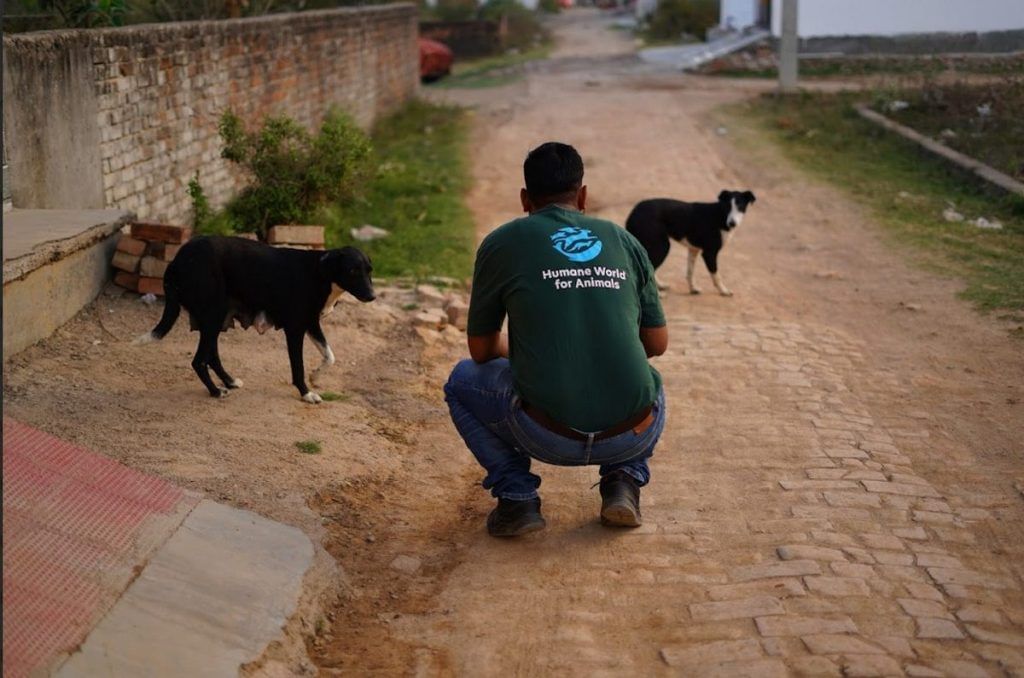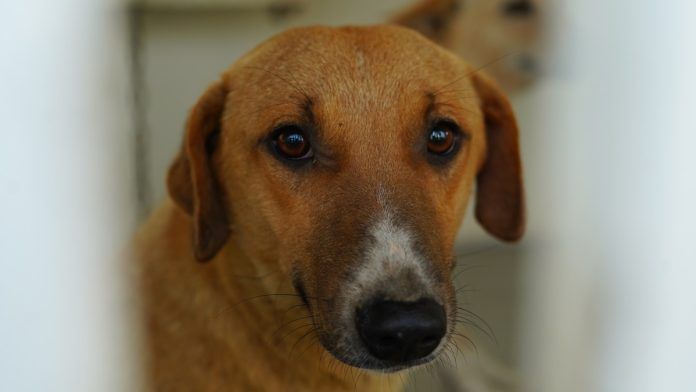New Delhi: In Delhi’s backyard, cities such as Lucknow and Dehradun have shown it’s possible to manage street dogs without shunting them off to shelters. Sterilisation drives have curbed their numbers, while vaccinations and community involvement have reduced health risks and eased human-animal conflict.
With the Supreme Court giving the municipal corporation of Delhi eight weeks to remove all stray dogs from public areas and put them in dedicated shelters without “any compromise,” dog lovers, animal empathisers, and activists are panicking and pointing out that there are other, better solutions.
These success stories aren’t just from countries like the Netherlands, which has no street dogs, or Bhutan, which claims to have achieved 100 percent sterilisation. Closer home, several cities have tackled the so-called stray dog problem through the efforts of NGOs such as Humane World for Animals (formerly Humane Society International), working with authorities in Uttar Pradesh, Uttarakhand, and Gujarat. In Lucknow, over 84 percent of dogs have been sterilised since 2019. In Dehradun, the stray population has fallen by 40 per cent since 2016. As of 2022, Vadodara had crossed 80 percent sterilisation.
“Killing or crowding dogs in a shelter is not an option, the shelter homes will become centres of diseases,” said Keren Nazareth, senior director, street dog program at Humane World.
Birth control rather than banishment is also what animal advocates in Delhi are calling for. But officials running Animal Birth Control (ABC) centres warn that the Supreme Court’s order will make sterilisation harder, not easier. Surgeries require several days of post-operative care, which is impossible if kennels are crammed with dogs meant to be held indefinitely.
Delhi has 20 operational sterilisation centres, all managed by registered NGOs. In the past six months, they have sterilised about 65,000 dogs, which is far short of the scale experts say is needed to stabilise the city’s street dog population, estimated at around 10 lakh.
“Sheltering is confinement, a punishment for dogs. They need to be sterilised and vaccinated. There should be community programmes to make people aware,” said Delhi resident Gagan Madaan, a corporate employee and dog lover. “We need to understand that they are not ‘strays’ but creatures with feelings.”
Also Read: Stray dogs have the right to live. SC order can trigger a wave of animal cruelty
‘Govt support made all the difference’
The turnaround in Dehradun or Lucknow came not overnight but from years of quiet, methodical work. Starting with counting the animals.
In Dehradun, Humane World for Animals began in 2016 by sending volunteers from neighbourhood to neighbourhood to log each dog and share the numbers with the state government.
“Our aim is to sterilise 90 per cent of dogs over a period of time,” said senior director Nazareth. The organisation has managed to achieve the target in Dehradun and promised to reach it in Lucknow as well.

Uttarakhand launched a statewide Animal Birth Control programme after a woman was attacked by two pet dogs, according to Nazareth. Since then, the programme has been rolled out in Mussoorie, Nainital, Rishikesh, Kashipur, and Rudrapur. Dehradun has had the best results so far. Over the past nine years, the number of municipal wards has increased to 100, but the high sterilisation rate has held steady, and in 2025 the city recorded a 40 percent drop in its street dog population. With no new dogs replacing the old, numbers have naturally declined as older animals die from age or accidents.
In Uttar Pradesh, Lucknow has had promising results as well. The city began its sterilisation drive in 2019 and continued through the Covid years. As of March 2025, the city had sterilised more than 84 per cent of its strays. Without the programme, officials estimate the population — 95,000 in 2019 — would have swelled to 2.5–3 lakh. The current estimate is just over one lakh.
Acting on directions from the Yogi Adityanath government, the municipal corporation set up an Animal Birth Control monitoring committee and an organ-counting committee.
“There were increasing cases of dog-human conflict, and to reduce it we had to introduce massive sterilisation,” said Dr Abhinav Verna, the city’s animal welfare officer.
Lucknow now has one Animal Birth Control centre with a capacity of 300 dogs and facilities for more than 60 surgeries a day, with a second centre under construction.
“We have a successful ABC programme,” added Verna.
The UP and Uttarakhand governments have prioritised dog sterilisation, making it easier for municipal corporations and the NGO to act.
“We need infrastructure to run ABC programmes, and financial security. The municipal corporations of both the cities — Lucknow Municipal Corporation and Nagar Nigam, Dehradun — were able to provide us with that,” said Nazareth. “All the cities we have worked in are different in size, but we have identified the problems and utilised our resources accordingly.”
These are only a few examples of successful sterilisation drives in the country. Tirupati in Andhra Pradesh and Vadodara in Gujarat have also recorded more than 80 percent sterilisation.
In Delhi, sterilisations are yet to make a dent in dog numbers, and recent, reliable data is lacking, though estimates put stray numbers at 8 to 10 lakh.
The last survey done in 2009 revealed there were more than five lakh strays. In the past 16 years no survey has been conducted. In 2017, Humane Society International recorded more than 1.8 lakh dogs in South Delhi alone, but plans for a more comprehensive survey never took off, according to Nazareth.
“We were asked to do a survey, but after that there were no steps taken,” said Nazreth. “Whether it is Lucknow or Dehradun, the reason we have been able to carry out this programme is because of the government.”
Also Read: Delhi’s war on dogs has turned RWAs into a battleground. ‘They’re fighting, not debating’
Co-existence and community
In Saraswati Vihar, Dehradun, resident Tulika Bisht has seen the same six dogs in her locality for years.
“I have grown up here, I do not see aggressive dogs anymore. Now there is no population growth. Where I live people feed them, in fact one aunty has a system in place to feed all six of them,” said the 24-year-old.
The dogs in these cities have become part of households or colonies. Community engagement has played a big role in making sterilisation and vaccination programmes work. In both Dehradun and Lucknow, residents have brought around 30 per cent of dogs to sterilisation centres.
People who were once scared of dogs have stepped forward to help identify animals with rabies or aggression so they can be treated. A large part of the outreach has been about informing people of the dos and don’ts, and teaching them how and where to feed street dogs.
The dogs in these cities, by and large, are coexisting peacefully with humans.
“Stray dogs know how to sustain themselves,” said Nazareth. “They are not a burden on taxpayers.”
(Edited by Asavari Singh)







There is another way – a much more prudent and cost-effective one. All such stray dogs can be rounded up and sent to Nagaland and Arunachal Pradesh. They are considered to be the best and cheapest source of protein by many tribes there. This would be a win-win situation for everyone.
I’m from Dehradun and travelling on Sahastradhara Road where I see minimum 50 dogs in 1/2 km of the main road. It’s very difficult to walk on the street without the fear of being attacked. I think the Uttarakhand authorities have to review the numbers of dogs again as it doesn’t match reality